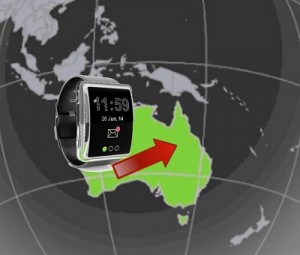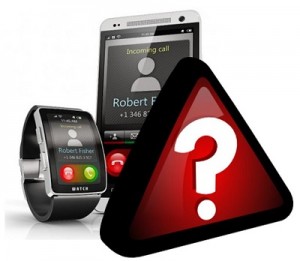A new forecast from Roy Morgan Research says that Australians will soon buy more wearable technology.
Independent research firm, Roy Morgan Research, has released a prediction that has said that the claims of intention to buy a smartwatch by Australians currently reflects the types of figures that were generated about the intention to purchase smartphones back when those devices were in their infancy.
For that reason, the firm believes that Australia will soon start to see a notable growth in wearable technology.
The study included the participation of about 520,000 Australians and ran from January through April 2015. What was found was that 2.7 percent of the people who took part said that they felt that they would purchase a smartwatch within the following year. Though that figure may seem rather small, it may be more important than it appears, as the firm pointed out that early studies with regards to the intent to purchase an iPhone – back when that device had only just hit the market – were very similar. Back then, 3.6 percent of Australian survey respondents said that they were considering buying one within the first four months of its entry to the market.
What has yet to be seen is whether the trends for the smartwatch will continue to parallel those of the smartphone.
 It is currently estimated that there are nearly 13 million iPhone owners in Australia. That type of future for wearable technology within the country is clearly nothing to sniff at. Furthermore, when respondents were asked about whether they would prefer to purchase an Apple Watch or if they would rather invest in the wearables from another brand, the figures showed that a similar percentage want the Apple product in wearable technology as was the case with smartphones.
It is currently estimated that there are nearly 13 million iPhone owners in Australia. That type of future for wearable technology within the country is clearly nothing to sniff at. Furthermore, when respondents were asked about whether they would prefer to purchase an Apple Watch or if they would rather invest in the wearables from another brand, the figures showed that a similar percentage want the Apple product in wearable technology as was the case with smartphones.
Among those who are interested in the devices, a comparable percentage would prefer an Apple Watch to that of other brands as was the case when an iPhone was the choice over other smartphones within the first four months of its release.
What is interesting is that even the age profile of those who are interested in the smartwatch is similar to the figures from 2008 when the iPhone was new.
The Apple Watch was seen by many as the hope for the wearables sector’s future, but will it be enough?
There was a massive amount of hype before the release of the Apple Watch not only because it would be the next device from the iPhone maker, but also because many people saw the company’s entry into the market as the future of the wearable technology sector.
Now, the device has been out for a while and predictions have been diverging regarding its influence.
It is certain that the sales of those devices have been strong, and it has drawn wearable technology into the spotlight so that even people who had never heard of a smartwatch before have frequently heard of one, now. But at the same time, the majority of people still haven’t actually seen these wearables in real life. Aside from fitness trackers, most people haven’t actually experienced the use of smartwatches or smartglasses, nor have they seen them on anyone else. So analysts have been coming up with their predictions about the growth of the sector, and it seems that no two are quite alike.
The wearable technology sector is still learning about what consumers actually want from these devices.
 Among the primary complaints that had arisen about smartwatches – well before the release of the Apple Watch – was that many of them were very chunky and were not very appealing. Very few people were interested in wearing something that made them look like an extra in a made for TV sci-fi movie.
Among the primary complaints that had arisen about smartwatches – well before the release of the Apple Watch – was that many of them were very chunky and were not very appealing. Very few people were interested in wearing something that made them look like an extra in a made for TV sci-fi movie.
The offerings have smoothed out a little bit, particularly as many wearables companies have partnered up with fashion designers in order to help to make sure that consumers would feel that the devices that they had to be offer would be something that would be worth wearing. However, there have been several other issues in terms of performance that have arisen and those still have yet to be addressed.
For instance, many consumers feel that the battery life of wearables is too short. The majority of devices that are currently being sold have an average one day battery life. While it may be convenient to plug in a smartphone overnight in order to recharge it, this becomes inconvenient for smartwatch wearers as their gadgets often involve features that track their sleep.
If they have to take the wearable technology devices off, then they lose the ability to benefit from that feature. This could lead to an albeit temporary trend of using the devices overnight, but recharging them during the daytime with portable battery chargers that can be plugged in and slipped into a pocket.
 It is currently estimated that there are nearly 13 million iPhone owners in Australia. That type of future for wearable technology within the country is clearly nothing to sniff at. Furthermore, when respondents were asked about whether they would prefer to purchase an Apple Watch or if they would rather invest in the wearables from another brand, the figures showed that a similar percentage want the Apple product in wearable technology as was the case with smartphones.
It is currently estimated that there are nearly 13 million iPhone owners in Australia. That type of future for wearable technology within the country is clearly nothing to sniff at. Furthermore, when respondents were asked about whether they would prefer to purchase an Apple Watch or if they would rather invest in the wearables from another brand, the figures showed that a similar percentage want the Apple product in wearable technology as was the case with smartphones.
 Among the primary complaints that had arisen about smartwatches – well before the release of the Apple Watch – was that many of them were very chunky and were not very appealing. Very few people were interested in wearing something that made them look like an extra in a made for TV sci-fi movie.
Among the primary complaints that had arisen about smartwatches – well before the release of the Apple Watch – was that many of them were very chunky and were not very appealing. Very few people were interested in wearing something that made them look like an extra in a made for TV sci-fi movie.